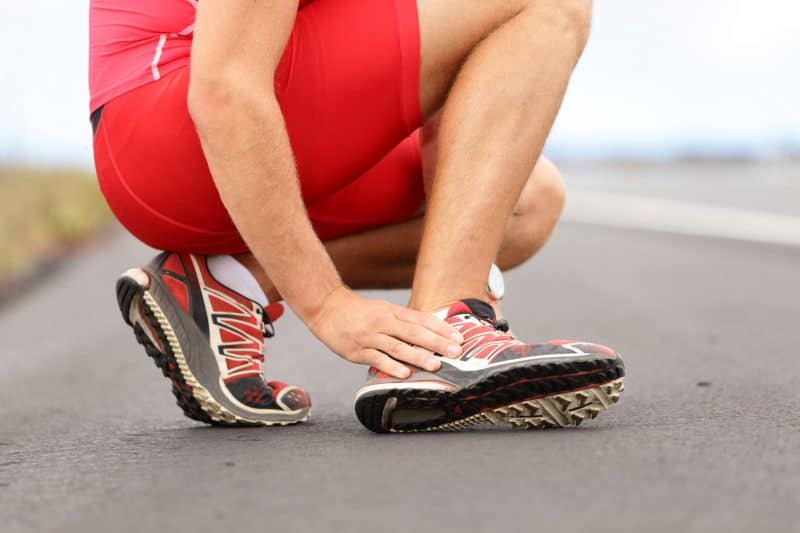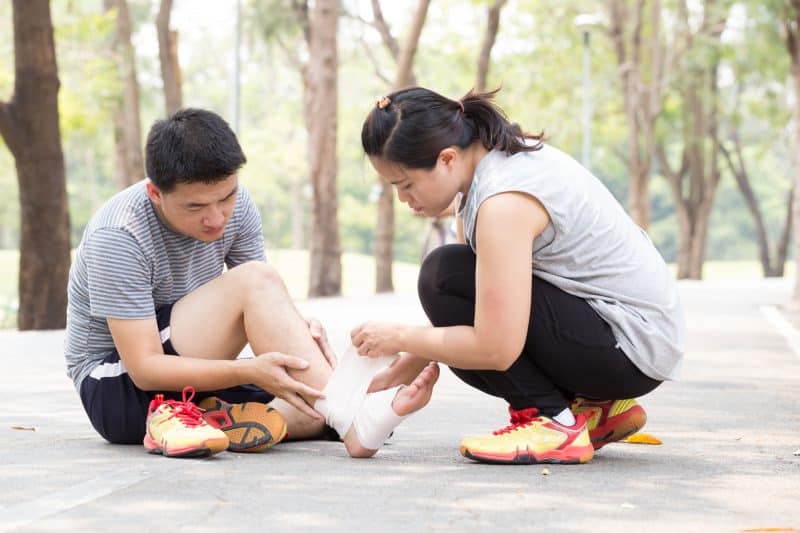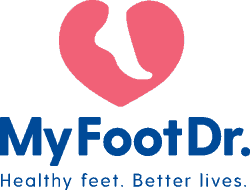
Running season in Singapore is all year round due to the wonderful hot humid climate, with no real offseason. A lot of athletes are training hard to achieve their fitness goals all year round. However, if you’re waking up with one of the common running injuries such as sore feet, heels or legs after a run, in most instances, it’s curable and preventable.
Fun runs inspire people of all ages and athletic abilities to get running over different distances for a worthy cause. Whether it be to start getting fit or just in it for the T-shirt. However, with first-timers and recreational runners comes a higher risk of injury.
With running your feet and legs take quite the pounding. Recent research by My FootDr found that “around 53 per cent of Australians have experienced sore feet after exercise in the last 12 months.”
However, research suggests that anywhere between 65 to 80% of runners suffer from running injuries every year! These stats could very much be the same in Singapore, are you one of them? Read on to find out more about the common running injuries that runners suffer from and this can be prevented.
Common Running injuries That Runners Suffer From

Blisters: Blisters are an acute response to high levels of stress on the skin. Long-distance running can expose skin to friction, shearing or abrasion, which can lead to blisters. Shoe choice, size and fit can make this worse if you don’t choose correctly. Excessive foot motion, overpronation, flat feet can also increase the incidence of blisters.
Achilles tendinopathy: The tendon that connects the two major calf muscles to the back of the heels, tightens and becomes irritated when it is under too much stress. There are a few different underlying reasons/foot mechanics as to why some people are more prone to Achilles Tendinopathy than others.
Shin splints: Pain here can be quite intense for some and is felt along the shin either the front of the shin bone or side of the shin bone. Running terrain and footwear choice can also be contributing factors to this condition. It often develops during the initial stages of training, or with over-use.
Plantar fasciitis (heel pain): Plantar Fasciitis is one of the most common conditions seen from running. The Plantar Fascia is the thick band of tissue on the bottom of the foot that starts from the heel and ends at the toes – usually quite painful in the mornings. This can lead to partial tears or calcaneal enthesopathy if not manageed correctly. Masking pain here can only make things worse.
Sesamoiditis: There are two small accessory bones that sit underneath the big toe joint, which can become very painful and inflamed under certain circumstances – often after running or plyometric exercises. Cushioning and offloading here becomes very important.
Ankle sprains: Most of us have experienced ankle sprains and it is certainly not pleasant. The ligaments holding the ankle joint together can over-stretch resulting in ligament damage. Once an ankle sprain has occurred, it’s very important to take the correct care management and rehabilitation to avoid a second sprain or even worse damage the tendons and ligaments even further.
Some Simple Advice to Prevent These Common Running Injuries

Stretching – Stretching helps to reduce muscle tension, prepares the muscles for intense exercises, and gradually helps to increase the flexibility and range of movement in your limbs. Stretching before exercise can help to decrease the chance of muscle injury.
Footwear – As a rule of thumb, running shoes should only be used for 12 months or 1000 kilometres, whichever comes first (probably the former). So, it is very important to update your trainers regularly.
Look at your running style – Has a friend ever told you that you run funny? It may not be the act of running that causes injury. If you’re a recreational or regular runner, it’s worthwhile getting a recorded gait analysis to identify the most appropriate footwear and if or not more is needed.
Usually when you have symptoms of foot, ankle or leg pain that recurs after running, then it is likely you have a biomechanical issue and you may need prescription custom foot orthotics to correct the dysfunction so that you may offload, restructure and change forces at play that predispose these common running injuries to develop or worsen.
Conclusion
We hope that this information has been useful in helping you to understand some of the common running injuries that runners suffer from.
If you are suffering from one of those injuries mentioned in this article, do not hesitate to book an appointment with us to seek care management today.
